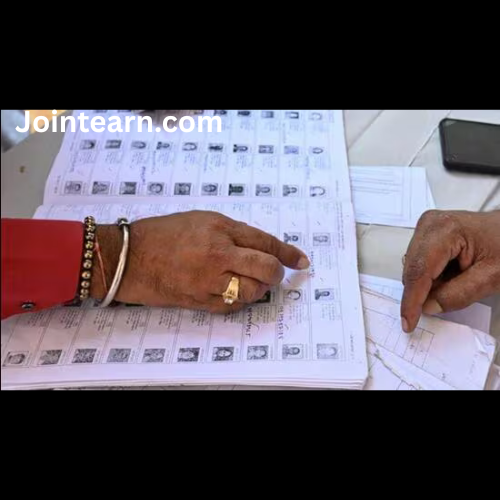The Bharatiya Janata Party (BJP) in Bihar celebrated a sweeping victory for the National Democratic Alliance (NDA) in the 2025 assembly elections by prominently showcasing the enduring political partnership between Prime Minister Narendra Modi and Chief Minister Nitish Kumar. As the results unfolded, the party posted a photograph of the two leaders together, accompanied by a Bhojpuri caption that loosely translated to “The Modi–Nitish partnership is a hit; Bihar’s development will continue on repeat.” The celebratory message captured not only the spirit of the NDA’s massive mandate but also the BJP’s endorsement of Nitish Kumar’s continued leadership in the state.
By mid-afternoon on counting day, the NDA was racing ahead in more than 200 of the state’s 243 seats. The BJP led in 95 constituencies, while its ally, the Janata Dal (United), or JD(U), was ahead in 82. This show of strength across both parties provided a clear indication that Bihar had once again opted for the stability of the Modi–Nitish alliance, marking a decisive endorsement of their joint governance model.
The BJP’s social media post featuring Nitish Kumar alongside Prime Minister Modi was notable for reasons beyond the celebratory mood. It signaled, at least publicly, that Nitish retains a respected and central position within the alliance—a dynamic that has evolved over the years through fluctuations in seat-sharing arrangements and political equations. The post projected an image of unity and reaffirmed the BJP’s acknowledgement of Nitish Kumar as the chief ministerial face of the NDA, even as the BJP remained the numerically dominant partner.
This is not the first time Nitish Kumar has held onto the chief minister’s post despite JD(U)’s lower seat count. In the 2020 assembly elections, JD(U) had managed to secure only 43 seats, a steep drop largely attributed to sabotage by Chirag Paswan’s Lok Janshakti Party. Despite this setback, Nitish Kumar was sworn in as chief minister because the BJP—then the largest NDA constituent—endorsed his leadership. This decision effectively reinforced Nitish’s stature within the alliance, although it also initiated a period of recalibration in the JD(U)–BJP power balance.
Seat-sharing patterns over the years reflect this gradual shift. In 2010, JD(U) contested 141 seats while BJP contested 102. By 2020, the arrangement changed to 115 seats for JD(U) and 110 for BJP, indicating the narrowing gap between the two allies. In the 2025 elections, both parties contested an equal number of seats—101 each—a significant indicator of how JD(U)’s influence had contracted and the BJP’s had expanded. For observers, this parity in seat-sharing highlighted the BJP’s growing leverage and raised questions about how power would be distributed in the alliance after the new government was formed.
Political analysts had, in fact, widely speculated before the results that unless JD(U) performed exceptionally well—possibly even surpassing the BJP—Nitish’s grip over the chief minister’s office could become more symbolic than substantive in the years ahead. With the BJP fielding several influential candidates, strengthening organisational structures, and aggressively expanding its voter base across caste lines, analysts believed the party might eventually push for its own chief minister. Indeed, the BJP’s long-standing presence in the state—boasting two deputy chief ministers for more than fourteen consecutive years—had led many to anticipate a shift in power dynamics sooner rather than later.
Yet, Bihar remains the only major state in the Hindi heartland where the BJP has never held the chief ministerial post. Even as the party grows from strength to strength electorally, the chief ministerial chair continues to be occupied by leaders from its allies. Nitish Kumar’s enduring presence at the helm, even amid evolving political patterns, underscores both his personal influence and a certain cautious pragmatism within the BJP.
For now, the electoral verdict has placed Nitish Kumar in a position of renewed legitimacy, even as questions about succession and future leadership linger. Despite concerns about his health and political longevity, Nitish continues to command the trust of a large segment of Bihar’s electorate. Ground reports from across the state suggest that the NDA’s support among extremely backward classes (EBCs) and women voters remained particularly strong. Nitish’s longstanding emphasis on welfare schemes, improved law and order, and better public service delivery appears to have resonated deeply with these groups.
Many voters, especially in rural and semi-urban areas, seem to view Nitish Kumar as a dependable and experienced leader whose governance track record provides a sense of stability. This loyalty, combined with the national-level appeal of Prime Minister Modi, created a formidable alliance that proved challenging for the opposition to counter. The BJP, aware of the electoral benefits of this partnership, has been careful to publicly reinforce the image of unity with the JD(U)—a strategy reflected in celebratory visuals shared after the NDA’s victory.
The 2025 election results also underline how the BJP and JD(U) have managed to evolve their alliance through changing political realities. While the BJP is likely to remain the larger partner in terms of seat-share and organisational strength, Nitish Kumar’s personal credibility and his longstanding administrative experience continue to serve as assets for the NDA. Even if internal recalibrations are likely in the years to come, both parties appear committed, for now, to maintaining a cooperative working relationship centred around shared governance priorities.
In the immediate aftermath of the results, the BJP’s focus remained on emphasising continuity in development and governance. Party leaders framed the victory as a mandate for continuing infrastructural expansion, welfare schemes, and the broader development agenda spearheaded jointly by the Centre and the state. The Modi–Nitish image, circulated widely on social media, symbolised not just electoral triumph but a promise of continued partnership.
As Bihar looks ahead to a new government formation under the NDA, the partnership between Modi and Nitish Kumar—described as the “hit jodi” by the BJP’s jubilant post—remains central to the political narrative. While the long-term future of the alliance will depend on negotiations, leadership dynamics, and shifting voter expectations, the resounding mandate of 2025 has temporarily reaffirmed the equilibrium between the two parties. For now, the BJP’s celebration signals that the NDA’s dual leadership model will continue guiding Bihar’s political direction, with both parties projecting unity and stability as they prepare for another term in power.


Leave a Reply